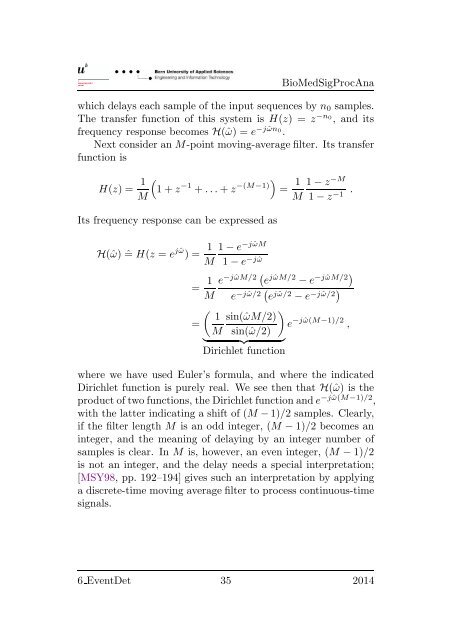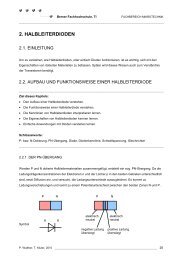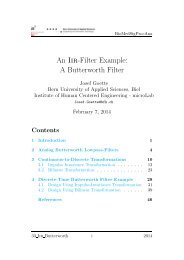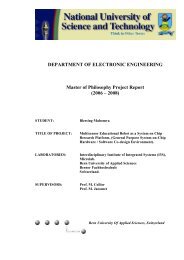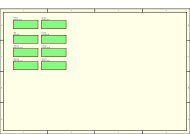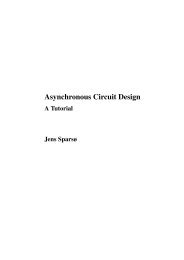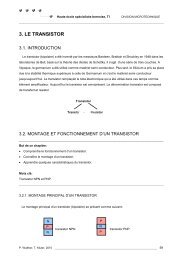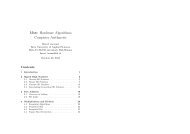Event Detection: Qrs-Complexes in Ecg Signals - microLab
Event Detection: Qrs-Complexes in Ecg Signals - microLab
Event Detection: Qrs-Complexes in Ecg Signals - microLab
- No tags were found...
Create successful ePaper yourself
Turn your PDF publications into a flip-book with our unique Google optimized e-Paper software.
BioMedSigProcAnawhich delays each sample of the <strong>in</strong>put sequences by n 0 samples.The transfer function of this system is H(z) = z −n0 , and itsfrequency response becomes H(ˆω) = e −jˆωn0 .Next consider an M-po<strong>in</strong>t mov<strong>in</strong>g-average filter. Its transferfunction isH(z) = 1 M(1 + z −1 + . . . + z −(M−1)) = 1 1 − z −MM 1 − z −1 .Its frequency response can be expressed asH(ˆω) ˆ= H(z = e jˆω ) = 1 M1 − e −jˆωM1 − e −jˆω= 1 e ( −jˆωM/2 e jˆωM/2 − e −jˆωM/2)M e ( −jˆω/2 e jˆω/2 − e −jˆω/2)( ) 1 s<strong>in</strong>(ˆωM/2)=e −jˆω(M−1)/2 ,M s<strong>in</strong>(ˆω/2)} {{ }Dirichlet functionwhere we have used Euler’s formula, and where the <strong>in</strong>dicatedDirichlet function is purely real. We see then that H(ˆω) is theproduct of two functions, the Dirichlet function and e −jˆω(M−1)/2 ,with the latter <strong>in</strong>dicat<strong>in</strong>g a shift of (M −1)/2 samples. Clearly,if the filter length M is an odd <strong>in</strong>teger, (M − 1)/2 becomes an<strong>in</strong>teger, and the mean<strong>in</strong>g of delay<strong>in</strong>g by an <strong>in</strong>teger number ofsamples is clear. In M is, however, an even <strong>in</strong>teger, (M − 1)/2is not an <strong>in</strong>teger, and the delay needs a special <strong>in</strong>terpretation;[MSY98, pp. 192–194] gives such an <strong>in</strong>terpretation by apply<strong>in</strong>ga discrete-time mov<strong>in</strong>g average filter to process cont<strong>in</strong>uous-timesignals.6 <strong>Event</strong>Det 35 2014


